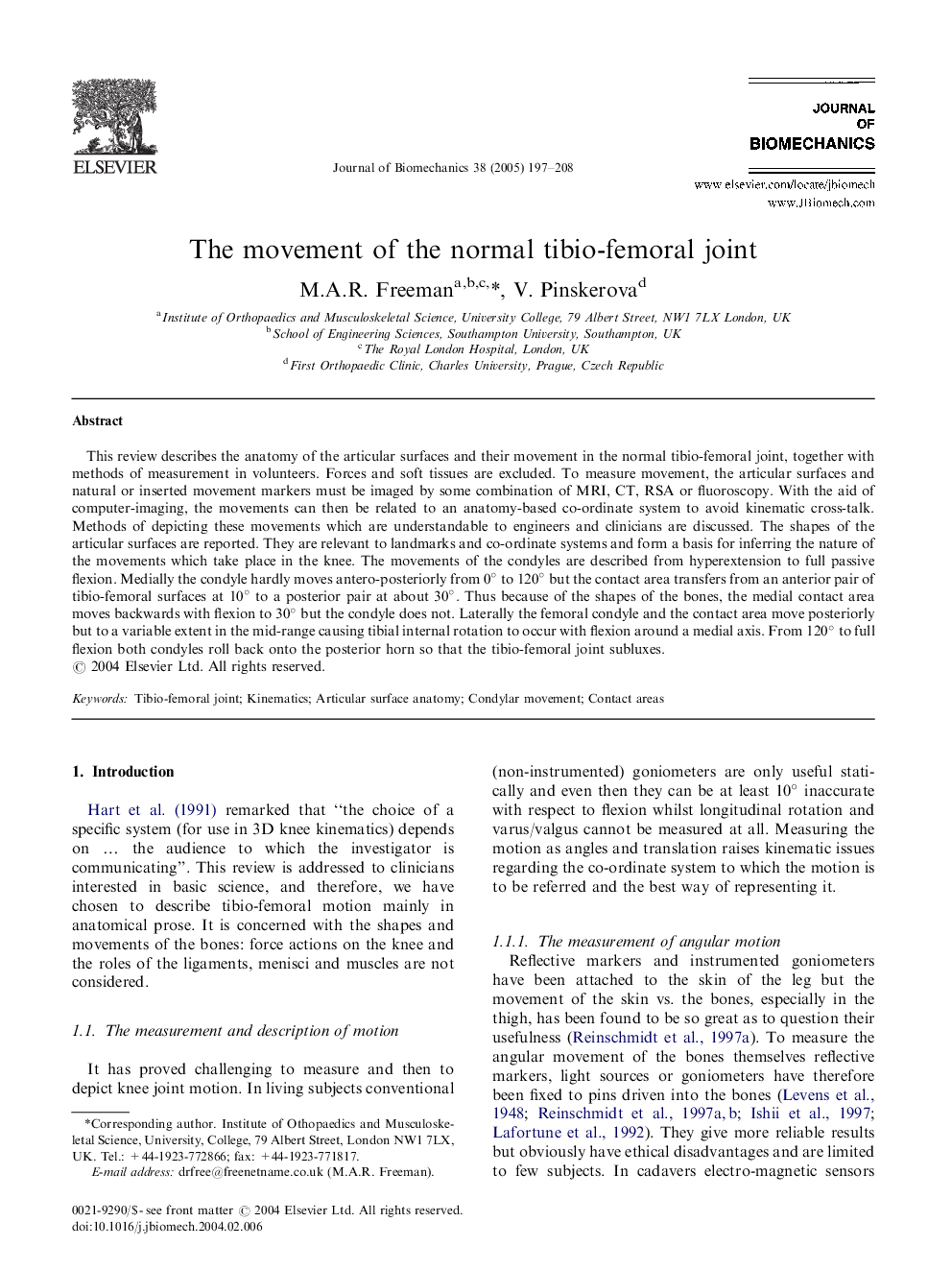| Article ID | Journal | Published Year | Pages | File Type |
|---|---|---|---|---|
| 10434512 | Journal of Biomechanics | 2005 | 12 Pages |
Abstract
This review describes the anatomy of the articular surfaces and their movement in the normal tibio-femoral joint, together with methods of measurement in volunteers. Forces and soft tissues are excluded. To measure movement, the articular surfaces and natural or inserted movement markers must be imaged by some combination of MRI, CT, RSA or fluoroscopy. With the aid of computer-imaging, the movements can then be related to an anatomy-based co-ordinate system to avoid kinematic cross-talk. Methods of depicting these movements which are understandable to engineers and clinicians are discussed. The shapes of the articular surfaces are reported. They are relevant to landmarks and co-ordinate systems and form a basis for inferring the nature of the movements which take place in the knee. The movements of the condyles are described from hyperextension to full passive flexion. Medially the condyle hardly moves antero-posteriorly from 0° to 120° but the contact area transfers from an anterior pair of tibio-femoral surfaces at 10° to a posterior pair at about 30°. Thus because of the shapes of the bones, the medial contact area moves backwards with flexion to 30° but the condyle does not. Laterally the femoral condyle and the contact area move posteriorly but to a variable extent in the mid-range causing tibial internal rotation to occur with flexion around a medial axis. From 120° to full flexion both condyles roll back onto the posterior horn so that the tibio-femoral joint subluxes.
Keywords
Related Topics
Physical Sciences and Engineering
Engineering
Biomedical Engineering
Authors
M.A.R. Freeman, V. Pinskerova,
